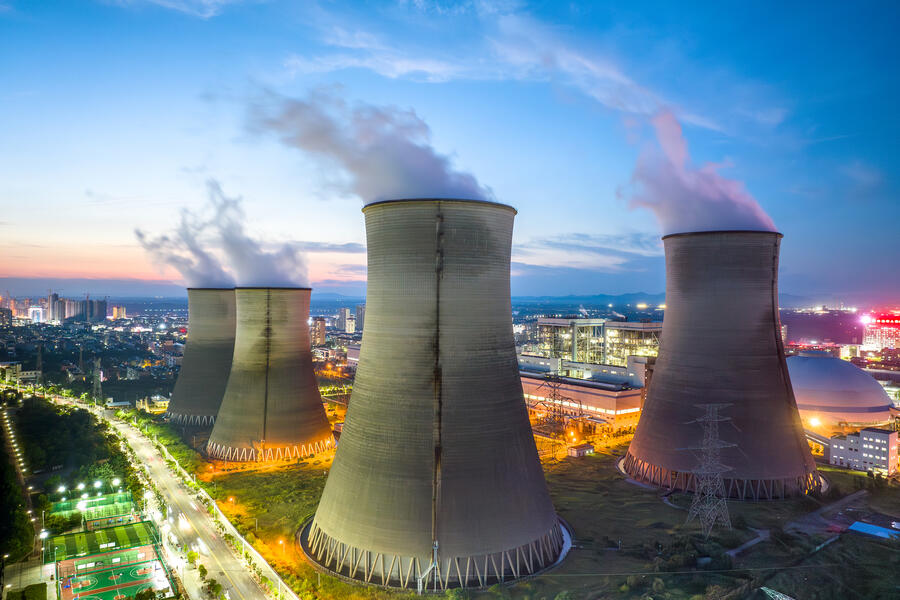- Name
- Jill Rosen
- jrosen@jhu.edu
- Office phone
- 443-997-9906
- Cell phone
- 443-547-8805
As countries race to scale up nuclear power to meet climate goals and fuel power-hungry data centers, a longstanding problem persists: Nuclear plants are notoriously expensive to build. But China is offering the world a lesson in curbing costs.
While nuclear plants have become increasingly expensive in the United States and France, in China, construction and operating costs are dramatically less, find researchers from Johns Hopkins University, Harvard, CUNY, and Stony Brook University. The team compiled and analyzed new data to show how China has reduced nuclear construction costs over time though a mixture of standardized designs, strategic indigenization of supply chains, and coordinated industrial policy.
In the U.S., average costs today for new nuclear plants can be as high as $15/watt, while the latest French plants costs over $4/watt, according to the authors. But the current cost of the highly standardized Chinese-designed plants are half that, or about $2/watt, the team found.
"This is an exciting three-country comparison of data and trends which follows a model we first tried back in 2007 when we could only access data for the 'fleet' of 103 U.S nuclear plants at 67 sites. Now we can look globally and update our approach at a time when many nations in both industrialized and industrializing regions are taking a deep, second, look at nuclear power," says author Dan Kammen, the Bloomberg Distinguished Professor of the Just Energy Transition at Johns Hopkins.
The analysis appears today in Nature.
The authors caution that nuclear power is still not cheap, but say China's experience offers a valuable playbook for other countries aiming to deploy nuclear energy affordably and at scale.
"Globally, the more nuclear we build, the more expensive it's gotten," says Shangwei Liu, lead author and a researcher at Harvard's Kennedy School. "But in China we see the opposite: a carefully sequenced strategy that is driving costs down—not just through technology, but through policy, institutions, and supply chain coordination."
Keys to China's success, the authors say, are predictable regulation, staged indigenization of manufacturing, and long-term planning.
"Substituting expensive imports with domestically produced components substantially lowered costs," says Gang He, assistant professor at the Marxe School of Public and International Affairs at CUNY's Baruch College. "Strategic indigenization may be the key not only for nuclear, but for other clean technologies in countries seeking to scale up rapidly."
The authors call on researchers, policymakers, and industry leaders to avoid repeating past mistakes, such as abandoning standardized designs or rushing to localize complex systems, before domestic capabilities are ready. They argue for deeper component-level cost analysis and greater alignment between safety and cost control in regulatory systems.
"Countries that export nuclear technology should collaborate with importing ones to identify components that can be locally manufactured and train the workforce," says Minghao Qiu, an assistant professor at Stony Brook University.
As interest in small modular reactors grows and new nations enter the nuclear arena, the authors urge decision-makers to learn from both success stories and setbacks.
"China shows that nuclear power construction and operational costs early in the life of a reactor don't have to rise and rise," says Kammen, who also plays a leadership role in Hopkins' Ralph O'Connor Institute of Sustainable Energy. "But breaking the cost curse will take more than technology—it will take a smart and strategic approach. A key question for future research and practical demonstration is what happens to the costs—and the risks—of nuclear power when plants age and end-of-life and decommissioning costs must be addressed."
Posted in Science+Technology
Tagged energy, energy policy








